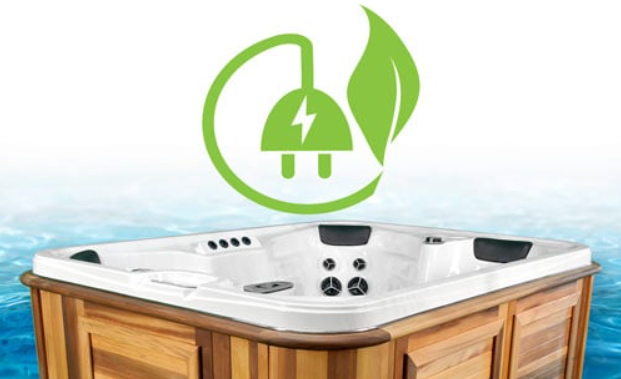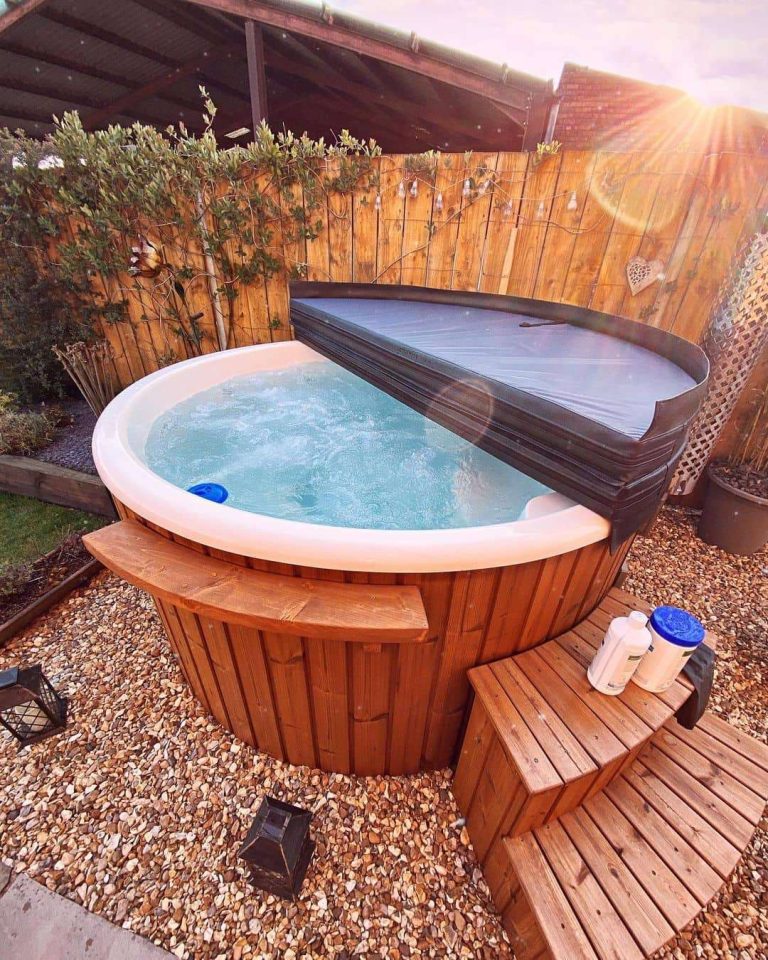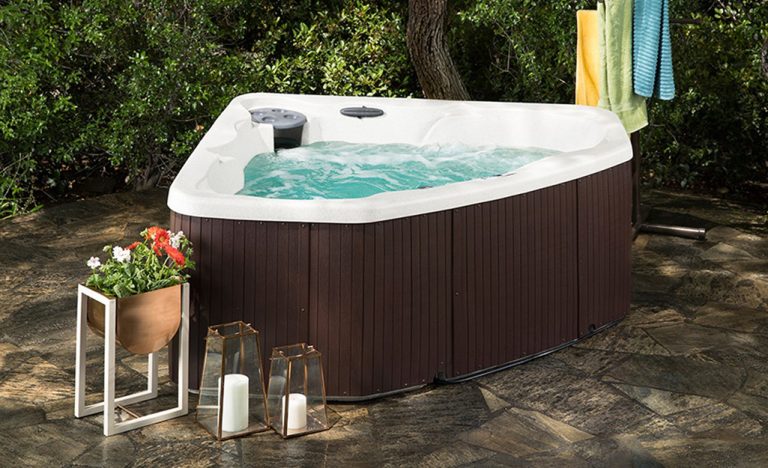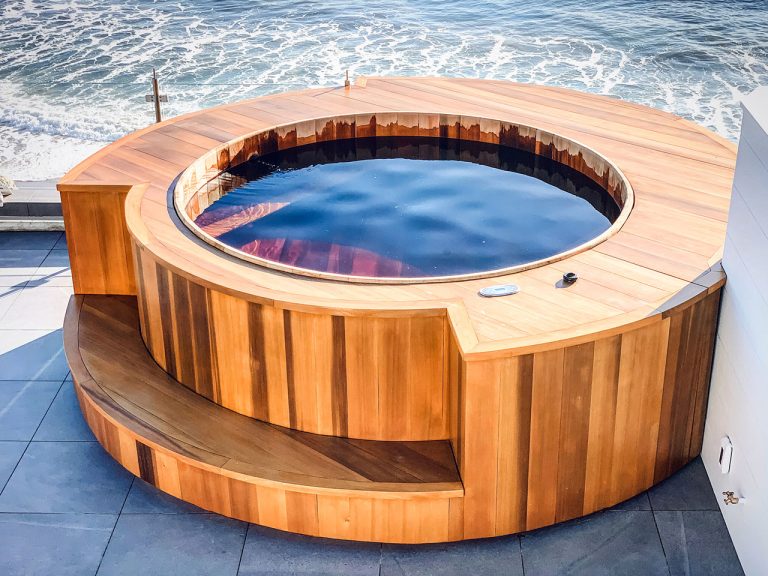Energy-Efficient Hot Tubs: Save Money and the Environment
Energy-efficient hot tubs offer a compelling solution for those seeking to save money and reduce their environmental impact while enjoying the luxurious comfort of a spa experience. These innovative hot tubs combine advanced technology, smart design features, and eco-friendly materials to minimize energy consumption and operating costs. This article will explore the benefits of energy-efficient hot tubs, key features that contribute to their efficiency, tips for maximizing energy savings, top models available in the market, cost considerations, and environmental impact. By understanding these aspects, readers will be better equipped to make informed decisions about investing in an energy-efficient hot tub that aligns with their financial and environmental goals.
Introduction
Hot tubs have become increasingly popular among homeowners seeking relaxation, hydrotherapy, and social entertainment. These water-filled vessels, typically heated to temperatures between 100°F and 104°F (37.8°C to 40°C), provide a soothing and rejuvenating experience. However, traditional hot tubs are often associated with high energy consumption and operating costs. Energy-efficient hot tubs address these concerns by incorporating advanced technologies and design features that significantly reduce energy usage without compromising on performance or comfort.
The importance of energy efficiency in hot tubs cannot be overstated. Energy-efficient hot tubs offer numerous benefits, including:
- Lower utility bills
- Reduced carbon footprint
- Improved longevity of components
- Enhanced user experience through smart features
This article will delve into these benefits, explore the key features that make hot tubs energy-efficient, and provide practical tips for maximizing efficiency. Additionally, we will examine top energy-efficient models, discuss cost considerations, and highlight the positive environmental impact of choosing an energy-efficient hot tub.
Benefits of Energy-Efficient Hot Tubs
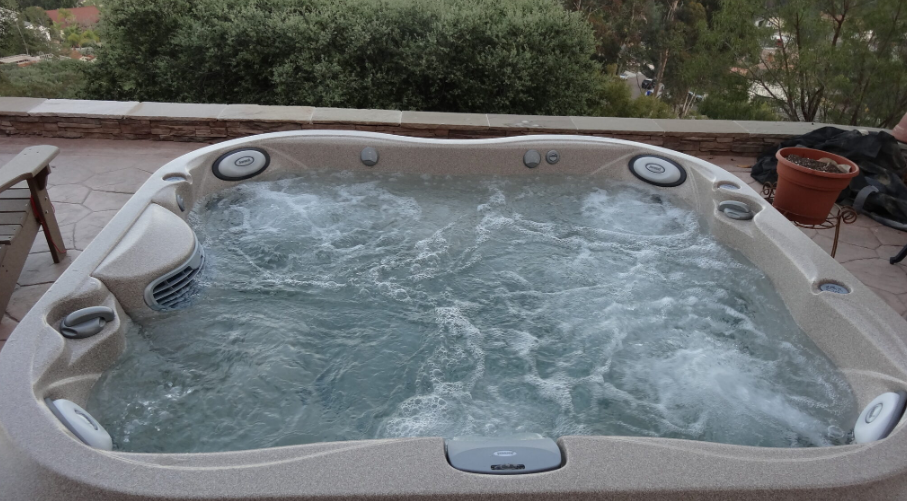
Energy-efficient hot tubs provide substantial advantages over their traditional counterparts. The primary benefits include:
- Lower operating costs Energy-efficient hot tubs consume significantly less electricity than conventional models. This reduction in energy consumption translates directly into lower utility bills for homeowners. On average, energy-efficient hot tubs can save users between 25% to 50% on their monthly operating costs compared to standard models.
- Reduced environmental impact By consuming less energy, these hot tubs contribute to a smaller carbon footprint. Energy-efficient hot tubs reduce greenhouse gas emissions associated with electricity production, helping to combat climate change and promote sustainability.
- Improved longevity of the hot tub Energy-efficient hot tubs often incorporate higher-quality components and materials designed to withstand prolonged use while maintaining optimal performance. This results in a longer lifespan for the hot tub, reducing the need for frequent replacements and minimizing waste.
Comparison of Annual Operating Costs
| Hot Tub Type | Average Annual Operating Cost |
| Traditional | $1,000 – $1,500 |
| Energy-Efficient | $500 – $750 |
Key Features of Energy-Efficient Hot Tubs
Energy-efficient hot tubs incorporate several innovative features that contribute to their superior performance and reduced energy consumption:
Improved insulation High-quality insulation is crucial for maintaining water temperature and minimizing heat loss. Energy-efficient hot tubs often use:
- Full-foam insulation: Fills the entire cabinet space, reducing heat loss through the shell and plumbing
- Thermal barriers: Reflect heat back into the water
- Insulated covers: Prevent heat escape from the water surface
Energy-efficient pumps and motors Advanced pump and motor technologies optimize water circulation while consuming less energy. Features include:
- Variable-speed pumps: Adjust power output based on demand
- High-efficiency motors: Convert more electrical energy into mechanical energy
LED lighting LED lights consume up to 80% less energy than traditional incandescent bulbs while providing vibrant illumination options for enhancing the hot tub experience.
Smart controls and programming Intelligent control systems allow users to:
- Set precise temperature schedules
- Monitor energy usage in real-time
- Activate energy-saving modes when the hot tub is not in use
Tips for Maximizing Hot Tub Energy Efficiency
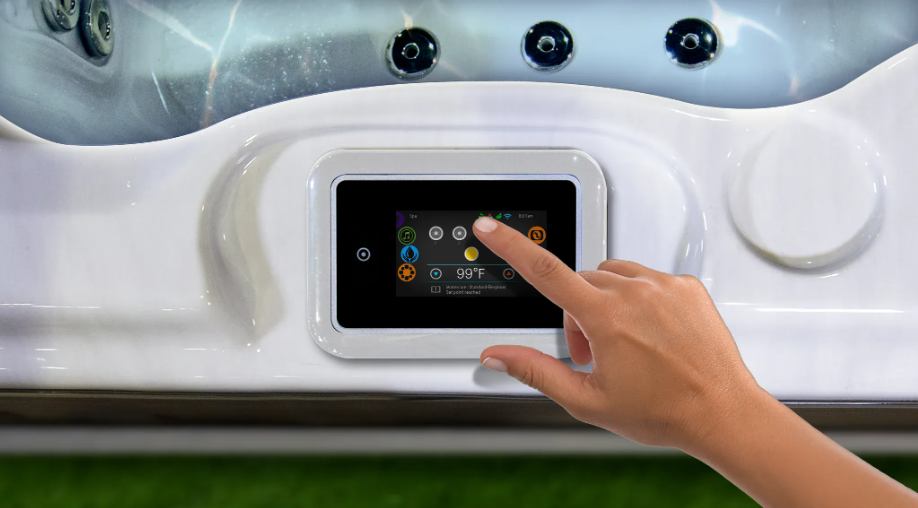
To fully capitalize on the energy-saving potential of an efficient hot tub, consider implementing the following practices:
Proper maintenance Regular maintenance ensures optimal performance and energy efficiency.
Key maintenance tasks include:
- Cleaning or replacing filters regularly
- Balancing water chemistry
- Checking for and repairing leaks promptly
Using a well-fitting cover A high-quality, properly fitted cover is essential for preventing heat loss.
Ensure that the cover:
- Seals tightly against the hot tub shell
- Is replaced when showing signs of wear or damage
- Is locked in place when the hot tub is not in use
Optimizing water temperature Lowering the water temperature by just a few degrees can significantly reduce energy consumption.
Consider:
- Setting the temperature 2-3 degrees lower than your usual preference
- Using a lower temperature setting when the hot tub is not in use for extended periods
Utilizing off-peak energy hours Take advantage of lower electricity rates during off-peak hours by:
- Programming the hot tub to heat and filter during these times
- Using the hot tub during off-peak hours when possible
Top Energy-Efficient Hot Tub Models
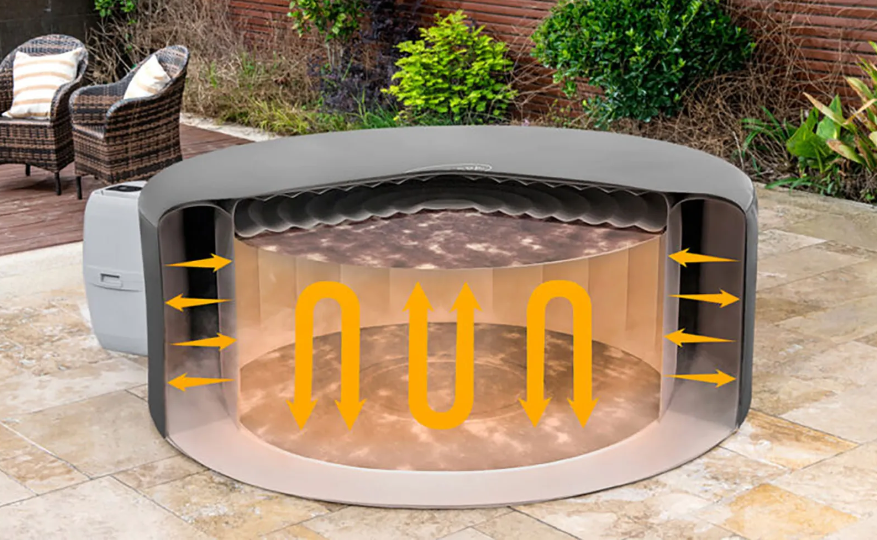
Several leading brands offer energy-efficient hot tub models that combine superior performance with eco-friendly features. Some notable options include:
Brief overview of leading brands and models
- Jacuzzi® J-485™ IP: Features SmartTub™ system for remote monitoring and control
- Bullfrog Spas A8L: Utilizes JetPak Therapy™ system for customizable hydrotherapy
- Hot Spring® Highlife® Grandee®: Incorporates FreshWater® Salt System for easy water care
Comparison of energy ratings and features
Energy-Efficient Hot Tub Model Comparison
| Model | Energy Rating | Key Features |
| Jacuzzi® J-485™ IP | CEC Certified | SmartTub™ system, ProFinish™ cabinetry |
| Bullfrog Spas A8L | EPA Certified | JetPak Therapy™, Energy Efficient Design |
| Hot Spring® Highlife® Grandee® | ENERGY STAR® Certified | FreshWater® Salt System, Connextion™ remote monitoring |
Cost Savings and ROI
When considering “Energy-Efficient Hot Tubs: Save Money and the Environment” it’s essential to evaluate the initial investment against long-term savings:
- Initial investment vs. long-term savings Energy-efficient hot tubs typically have a higher upfront cost compared to traditional models. However, the long-term savings in energy costs can offset this initial investment. On average, homeowners can expect to recoup the additional cost within 3-5 years through reduced utility bills.
- Potential energy rebates and incentives Many utility companies and government agencies offer rebates or incentives for purchasing energy-efficient appliances, including hot tubs. These programs can help offset the initial cost and accelerate the return on investment. Check with local utility providers and energy efficiency organizations for available programs in your area.
Environmental Impact

Energy-efficient hot tubs contribute to environmental conservation in several ways:
Reduced carbon footprint By consuming less energy, these hot tubs help decrease greenhouse gas emissions associated with electricity production. The average energy-efficient hot tub can reduce CO2 emissions by up to 1,500 pounds per year compared to a standard model.
Water conservation benefits Many energy-efficient hot tubs incorporate features that promote water conservation, such as:
- Improved filtration systems that extend water life
- Salt water systems that reduce the need for chemical treatments
- Smart controls that optimize water usage during cleaning cycles
List of Environmental Benefits:
- Lower energy consumption
- Reduced greenhouse gas emissions
- Decreased water waste
- Minimized chemical usage
- Extended product lifespan, reducing landfill waste
Conclusion
Energy-efficient hot tubs present an excellent solution for homeowners looking to save money while reducing their environmental impact. By utilizing advanced insulation, efficient pumps and motors, LED lighting, and smart controls, these hot tubs significantly cut down on energy consumption and operating costs. Despite their higher initial cost, the long-term savings and potential rebates make energy-efficient hot tubs a smart investment.
The environmental benefits of opting for an energy-efficient hot tub are also substantial. From lowering carbon emissions to conserving water, these eco-friendly spas contribute to a more sustainable future. With continuous advancements in technology, we can expect even greater improvements in hot tub energy efficiency, further enhancing the appeal for consumers and the environment alike.
For those considering a purchase or upgrade, energy-efficient models stand out as a compelling choice that aligns with both financial and environmental goals. When exploring options like The 10 Best Hot Tubs of 2024, investing in an energy-efficient model allows homeowners to indulge in the luxury of a spa experience while minimizing their ecological footprint and saving money over time.

HIEN NGUYEN THI is the owner of topratedjacuzzi.com, a website that specializes in providing information and reviews on various types of jacuzzi hot tubs. With a deep passion for bathroom and spa-related products, Jessica has devoted a significant amount of time and effort to building topratedjacuzzi.com into a reliable resource for those seeking information on the best hot tub models on the market. Through her website, Jessica provides detailed and unbiased reviews of notable jacuzzi hot tub models, including their technical specifications, advantages, disadvantages, and recommendations for each product. Additionally, she shares personal experiences and helpful tips on selecting and using hot tubs, enabling readers to make well-informed purchasing decisions. With enthusiasm and extensive expertise, Jessica consistently updates topratedjacuzzi.com with the latest trends and technologies in the hot tub industry. Her goal is to become the trusted go-to destination for those who wish to research and choose the highest-quality jacuzzi hot tubs.

